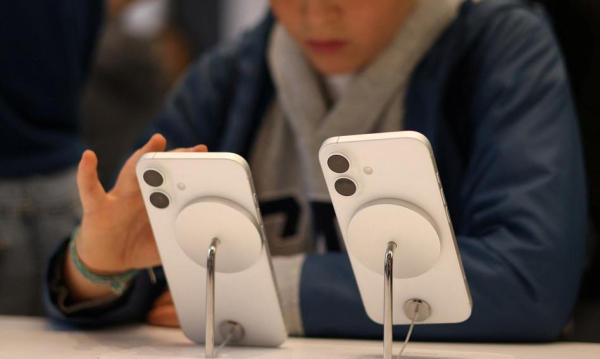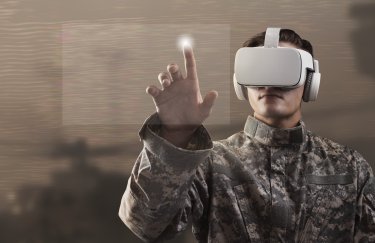Many inventions that were originally created with astronauts and space missions in mind have, over time, found wide application on Earth. Today, they are considered obvious. An example are solutions used in smartphones – Dr. Tomasz Barciński from the Space Research Center of the Polish Academy of Sciences told PAP.

The beginning of space exploration is the mid-20th century. Since then, the development of space technologies has influenced people's lives, and there are many inventions and innovations that are used every day today.
These include satellite navigation (e.g. GPS), thermal insulation foil (e.g. in rescue blankets), carbon composites (light and resistant materials), shape memory foam (e.g. in mattresses or helmets), carbon filters for water purification (in filter jugs), reinforced tires, infrared thermometers, Teflon (although not invented by NASA, but widely used), digital image processing (which, among other things, influenced the development of computed tomography technology), but also wireless vacuum cleaners and headphones.
See alsoHow artificial intelligence will affect the work of accountants
Space inventions have also found their way into smartphones. “Today, we cannot imagine a smartphone without a camera. Its heart is a tiny electronic matrix, called a CMOS matrix, which was developed for the needs of NASA's interplanetary missions,” recalled Dr. Tomasz Barciński, head of the Satellite Mechatronics and Robotics Laboratory at the Space Research Center of the Polish Academy of Sciences, in an interview with PAP.
As he added, specialists knew that it would be impossible to photograph planets using the old technique on film, because such photos could not be developed in space. “Therefore, a new method was needed to somehow record this image and send it to Earth by radio. In the 1970s and 1980s, large and energy-consuming devices similar to TV cameras were used, in the 1990s, work was carried out on miniaturizing image recording. This became the impetus for creating electronic matrices, in which the film was replaced by a screen with photosensitive pixels, which converted the photons falling on them into an electrical signal that could be amplified and sent to Earth by radio,” he described.
Many years later, the invention made its way to smartphones, following the trend of miniaturization of technology.
In turn, the first Apollo lunar mission gave rise to the so-called Kalman filter, which is now used in smartphones. “It's a groundbreaking algorithm,” Barciński said.
He explained that thanks to navigation in phones we know where we are with great accuracy. We also know in which direction and in which plane our phone is oriented. This is thanks to magnetic field sensors and acceleration sensors.
“These are accelerometers, or acceleration sensors, gyroscopes, or angular velocity sensors, magnetic field sensors, and GPS signals, which together provide a multitude of signals. However, using raw data, not much can be measured because it is very noisy. NASA also had such a challenge when it was necessary to +fix+ this data so that it shows the position and orientation, as well as the speed of the spacecraft. An algorithm developed by Rudolf Kalman was used, which can reject this noise, to obtain an estimate, or approximation of this value – as best as possible. He succeeded. This algorithm once guided astronauts to the Moon, and today it navigates us during the journey,” the scientist described.
He also mentioned LED technology, which, although not created for space purposes, its development and application have been significantly accelerated by research related to space programs, especially that conducted by NASA.
“The first diodes were weak, they could not illuminate a room. So they worked on their efficiency in order to use them in research on growing plants in space. The goal was achieved, and later LED technology became a permanent fixture on the lighting market,” said Tomasz Barciński.
He added that technologies developed for the needs of modern manned missions are also used in everyday life. “A spacecraft must have a so-called life support system that not only provides the conditions necessary for astronauts to live, but also increases their comfort. This is done, among other things, through increasingly improved air or water filtration systems, which are then quickly used on Earth. These may not be groundbreaking inventions, but their optimization, refinement, improvement of quality and energy efficiency are key here, which coincides with the trend on Earth to maximize the efficiency of devices and technologies,” he emphasized.
When asked which direction of space technology development is dominant: creating innovative solutions or improving existing ones, the expert replied that there is a balance.
“The space community – to put it simply – is divided into two groups: conservatives and progressives. The former use technological achievements with the idea: if something works, why change it, you can only improve it a little. The latter uses the latest trends and looks for completely new ideas. Interestingly, the solutions proposed by both groups often work equally well. Therefore, balance is key,” concluded Tomasz Barciński.
Agnieszka Kliks-Pudlik (PAP)
akp/ agt/ ktl/





